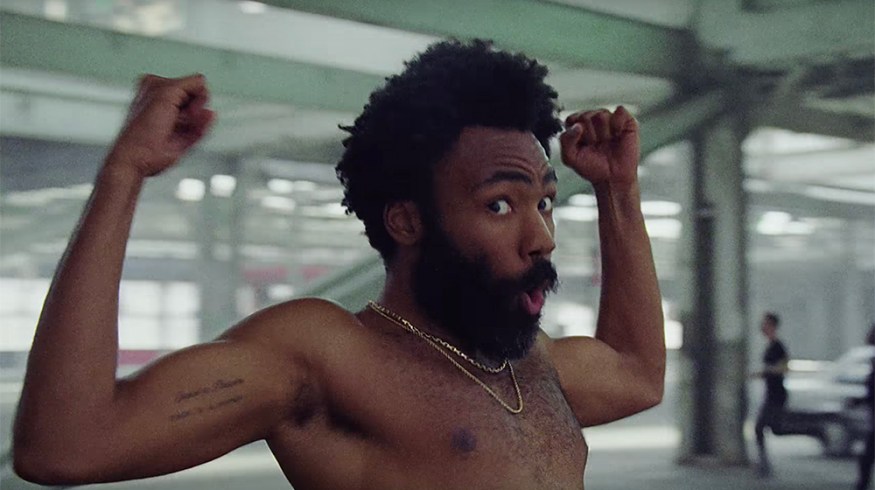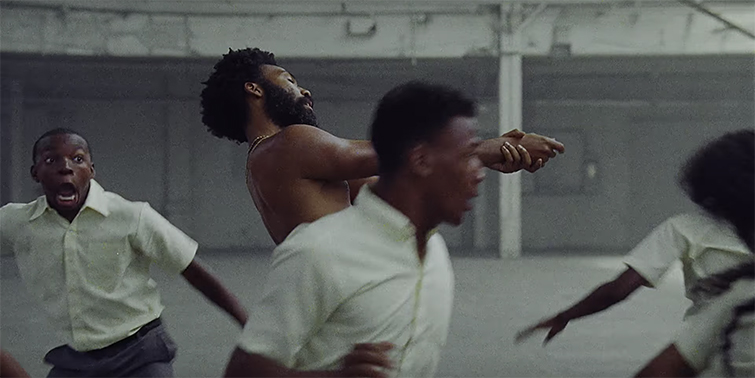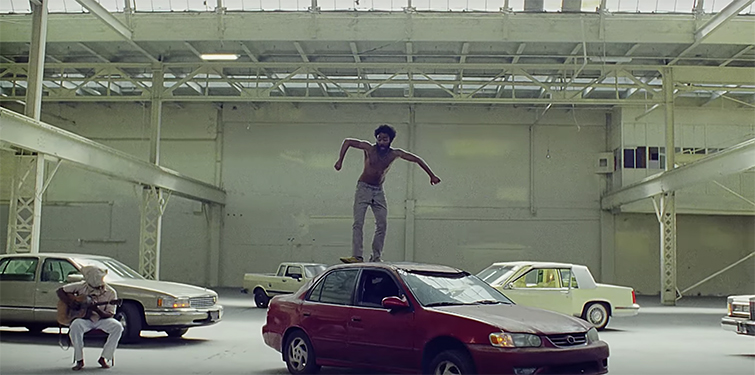
Interview: The Editor of “This is America” on Building the Iconic Video
The editor of “This Is America” sheds some light on working with Hiro Murai and Childish Gambino — and his Premiere workflow.
All images via Donald Glover.
Unless you’ve been living under a rock, you’ve most likely seen or heard about Childish Gambino’s rapturous “This Is America” video that went viral. The video is an insane political and technical wonder that will leave you speechless. Employing long takes, intricate background choreography, and striking imagery, the video is an excellent example of artists in our time pushing the medium forward and challenging others. One of the brilliant minds behind the video is Ernie Gilbert, an editor who has worked with the video’s director, Hiro Murai, and star, Childish Gambino, previously on the FX show Atlanta.
We spoke with Ernie about editing “This Is America,” working with Hiro and Childish Gambino, and what the future holds for him as an editor.
PremiumBeat: Tell us a little bit about how you got into editing?
Ernie Gilbert: I got started by doing tour documentary work for a couple of bands back in 2007 and 2008. Projects that I was filming on the road and then editing on the tour bus for early web content. Back then, the idea of having a videographer on tour with your band was pretty new, and it led to a lot of fun opportunities. YouTube was just getting going and felt like the Wild West. Doing those tours led to directing and editing music videos for bands on independent labels, which led me to Los Angeles in 2012, where I found myself in reality TV as a night assistant editor. From there, I got my union days and was able to jump to scripted work and more music videos. L.A. is such a large hub for music video production, but it’s also a very tight-knit community. One thing generally leads to another, and word of mouth goes a long way. Most of my jobs are booked by referrals from directors or producers who I’ve worked with.
PB: On “This Is America,” with such long takes, what was your role as an editor on this like? How was it different than your previous work with music videos?
EG: I’ve done a handful of longer-take music videos in the past couple years. They end up being their own challenge. Initially, I thought I could do a tracker document and try to rate each take with good or bad moment markers, making a count, and then mathematically choosing which to use. But I’ve found that the best way to handle it is to watch all the takes and go with your gut. Generally speaking, there’s one take that feels just right. That being said, sometimes there’s a second or a third that could work, and then there are a few that just won’t. Hiro is incredibly supportive and collaborative as a director. He wants to hear your opinion and get that different perspective. This motivates me to dig in and find the takes that really speak to me. Once I had my selects, I kicked out a rough cut for Hiro’s review, and then we sat down to look over alternative takes and my second and third choices per section.

The video is presented as a slow build, single-take journey that slowly but surely descends into chaos. So, with that idea, the director, DP, and editor had to use classic filmmaking techniques that were practical, and editing wizardry to take the audience through this hellish warehouse. Aside from the obvious cuts shown in the video, there are a few quick cuts here and there.
PB: How many hidden cuts are there in the video?
EG: Most of the whip pan-style cuts or regular cuts are pretty obvious, but we did do one invisible edit to combine two takes based on performance. See if you can find it.
PB: Were you on set? If so, were you putting together rough cuts on the fly?
EG: I wasn’t able to be on set for this one. They shot on 35mm film for this project, which meant not receiving the scans until three days after the shoot.
PB: Given the insane choreography and layout of the shoot, were some shots cut short due to unusable background footage?
EG: They had a day of rehearsals for the shoot and did a really great job of wrangling all the background chaos. We had a couple takes per setup that were cut in camera due to something not being how they wanted. Because of the nature of the shoot and the limit of the film they had on hand, I think they put in the work ahead of each take to really nail it. I was given some awesome options to pull from for each setup.

PB: What was left on the cutting room floor?
EG: For each set-up, we had a handful of alternate takes but nothing was superfluous. They had a plan and stuck to it. I think it shows.
PB: How many VFX shots (if any) did you have to work with?
EG: There ended up being about eight VFX shots. We worked with two VFX artists, Eric Binmoeller and Brandon Hirzel, to achieve them. The turnaround on the video was pretty intense, and they pulled off some really difficult work in a very short time.
PB: How involved in the editing process was Childish Gambino and Hiro Murai?
EG: Hiro and I sat together for a day of editing to review my rough cut and look at alternate takes. Donald wasn’t in L.A. at the time, so we sent him a couple of alternate options to look at and get his sign-off. Both Hiro and Donald weighed in on VFX and kept things moving forward.
PB: How has the collaborative process changed with Childish Gambino and Hiro since working on Atlanta?
EG: I can’t say I’ve worked with an artist and director more in touch creatively than Donald and Hiro, but I’m not sure how their process has changed from Atlanta. We finished the Atlanta Season 2 edits, and Hiro basically moved right into pre-production on “This Is America.”

PB: Which program did you use to edit this video and why? How did it help your workflow?
EG: I cut in the latest version of Adobe Premiere Pro CC. I find it to be incredibly fluid for my music video work. I use Premiere’s multi-cams to keep track of different takes and stay on top of all the options throughout the edit. I prep everything in a way that I have access to options quickly, so my directors can see alts for any section at any time. I also knew our VFX artist would be working primarily in After Effects CC, and being able to prep projects for him straight out of Premiere with the truncated schedule would ensure accuracy in the VFX handoff and keep things moving quickly.
PB: What are the next big projects you’ll be editing?
EG: I just finished up a music video for the band One Republic, ft. Logic for their song “Start Again off the Thirteen Reasons Why” Season 2 soundtrack. I am currently in the middle of cutting a new campaign for American Eagle and an HBO Comedy Special for Drew Michael.
There you have it: a glimpse into the mind of one of the best working editors right now — and what went into crafting such an momentous event in filmmaking and culture.
Looking for more filmmaking interviews? Check these out.
- Set Your Film Right: On Location with Robert Foulkes
- Exclusive Interview: The Creators of Some of The Most Popular LUT Packs Ever
- An Interview with Andrew Shulkind, DP of Netflix Original film The Ritual
- The Disaster Artist: Editing A Film About Making a Film
- Exclusive: Designing Wakanda and the Amazing Sets of Black Panther





